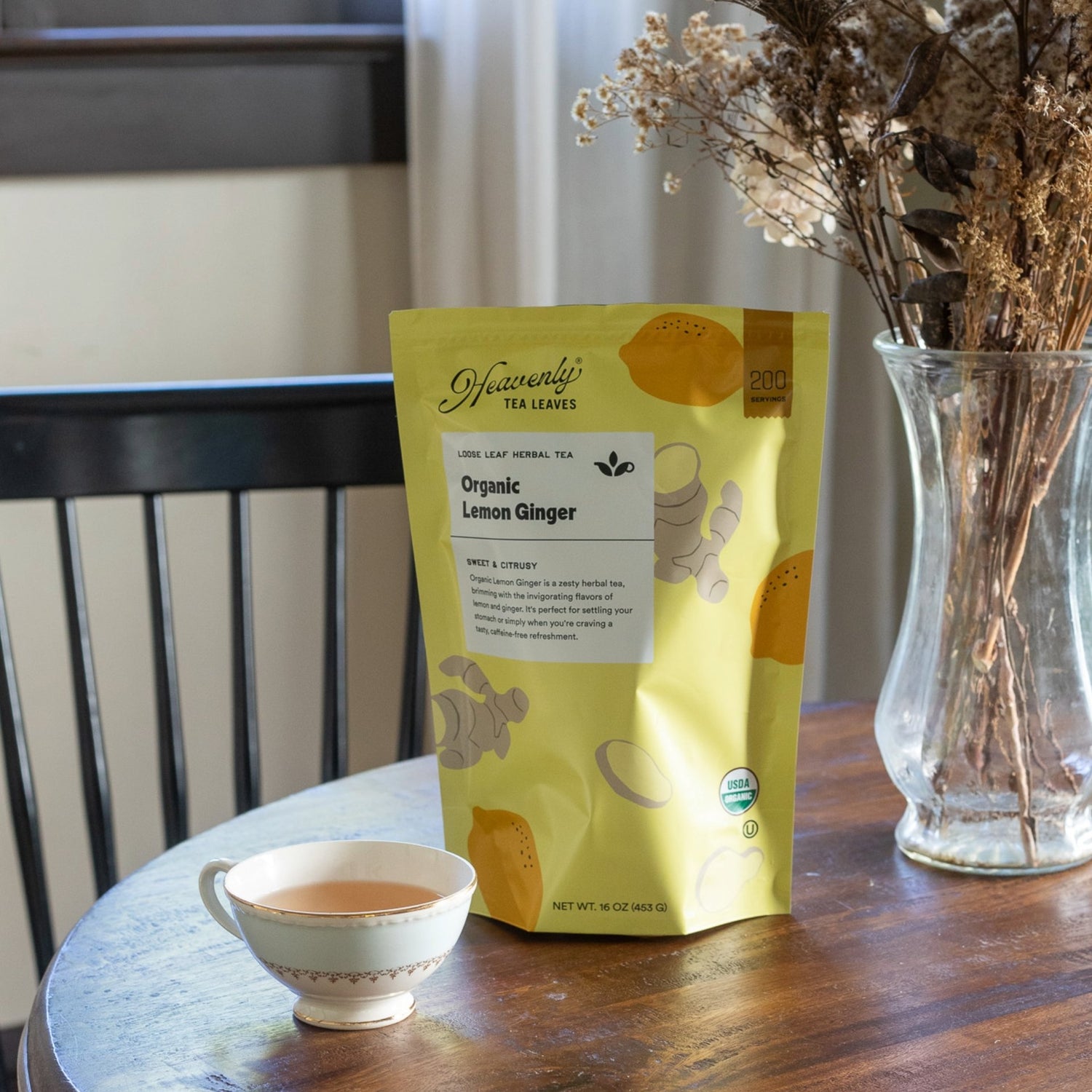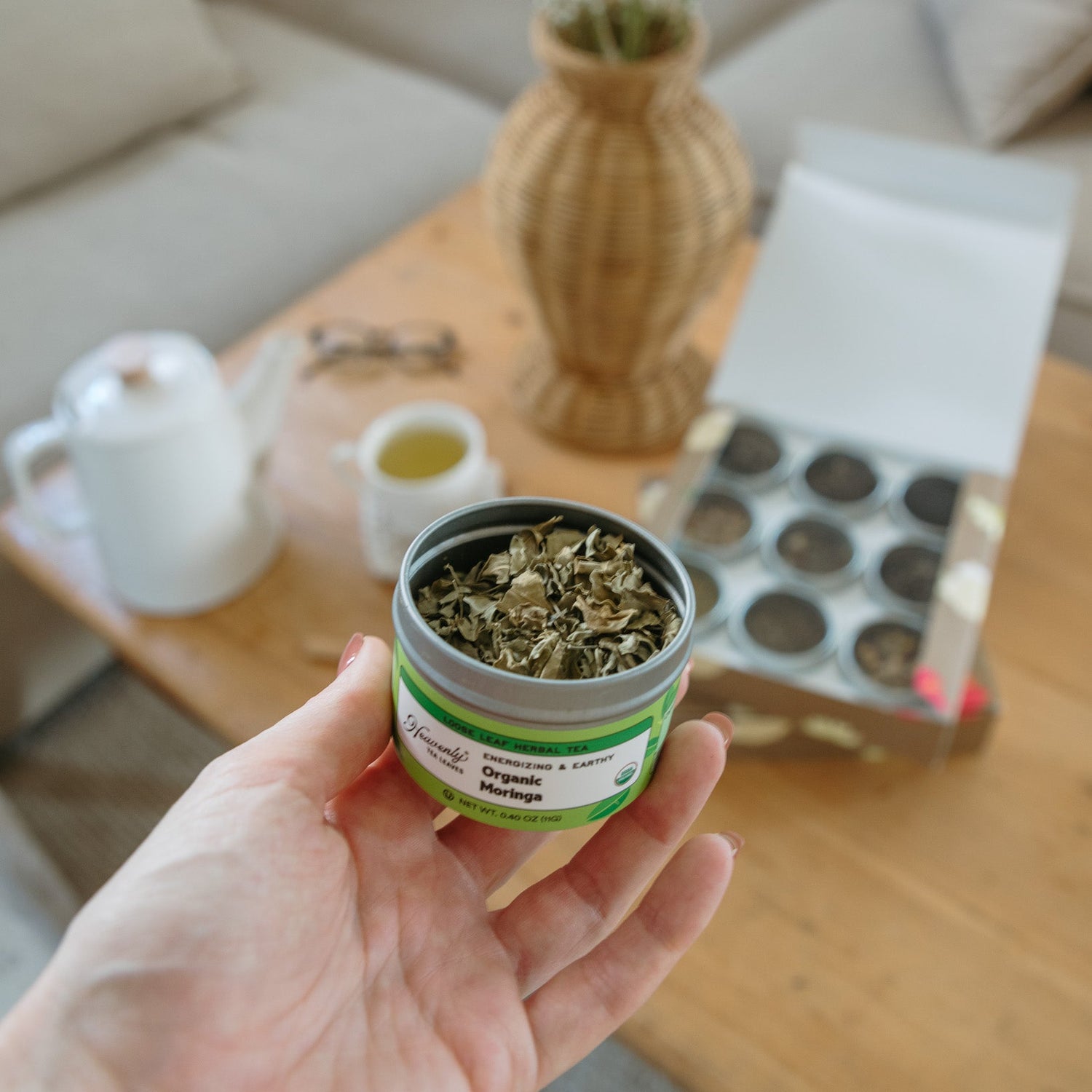The team at Heavenly Tea Leaves only enjoys one thing as much as we do tea, and that's traveling. Through our adventures and research, we have discovered that in each part of the world, tea truly takes on a new meaning. From Tibet to Turkey, the types of tea that people drink and the way they drink it are much more diverse than you'd expect. What ties most of these deep-rooted traditions together is the respect for tea, the process by which it is made, and its ability to unite people.
Like other nature-derived beverages, teas and tisanes can come from different plants, be grown at different elevations, harvested and picked at different times, and processed to bring out certain properties over others. In each country, there is usually a preferred tea type. And what to pair with that tea? It depends where you are. Sugar, butter, cream, tamarind seeds, and lemon are just a few additions that are common around the world. You can serve tea hot, extremely hot, or iced. One of the most famous tea-time rituals is the ancient tea ceremony of Japan, which has made certain that in Far East culture, tea is much more than a beverage – it's a highly regarded tradition. By contrast, in the American South, people like their tea iced, super-sweet, and often on-the-go in a disposable cup.
But just because you live in one country, it doesn't mean you can't enjoy and adopt the time-honored tea traditions of another. We've rounded up some of the most interesting global tea traditions that you may want to make your own one day:
1. Mint in Morocco
Touareg tea, more commonly known as Moroccan mint tea, is a staple in the North African country. It's customary to drink three cups of this black tea, poured from a curved spout held high above the cup (same goes in Turkey), infused with fresh mint leaves and often sweetened with sugar. Moroccan mint tea is usually served as part of a celebration or accompanying a delicious breakfast.
2. Turkish Tea Time
Brew black tea for approximately ten minutes and slightly dilute the mixture with some piping-hot water for a traditional glass of Turkish tea. Turkish tea is similar to Persian tea in its composition and in the traditions around it – namely, the ultimate hospitality toward family, friends, and even strangers.
3. Iran - an Ancient Tea Tradition
Brewed with a samovar - a water heater-crockpot hybrid adopted from Russia which is filled with wood or charcoal (modern versions use a heating element), and a small pot filled with water and caravan of concentrated tea placed on top, the ideal Persian tea is strong and reddish-brown in color. Before serving, the preparer will pour a bit into a cup to check its color and warm up the cup. Pouring the small sample back into the pot helps to stir the ingredients and distribute them evenly. Out of the home, a common place to gather and enjoy tea is a chaikhaneh, or tea house.
4. Russian Samovar Style
The centerpiece of Russian tea-making (like in Persian tea-making) is the samovar. The result is a concentrated black tea brew called zavarka. To serve, a bit of zavarka is poured into each drinker's cup and flavored with lemon, fruit, herbs, sugar, honey, or jam. Sometimes, hot cups are placed in decorative, metal holders known as podstakannik ("the thing under the glass") to keep them from burning the fingers. In Russia, hospitality, warmth, friendship, and tea are intertwined, and it is still considered polite to offer guests a cup upon entering one's home.
5. Argen-tea-na
Yerba Mate is South America's chai and originates in Argentina. This tisane is served hot and unsweetened and drunk through a special straw called a bombilla. The rules: don't stir the tea with the bombilla and always refuse a cup upon the first offer as a polite gesture (Same goes in Iran!).
6. Better with Yak Butter in Tibet
Tibet is home to butter tea, or Po cha, a potent concoction that keeps you warm, cleanses the body, and serves as a centerpiece for time with family, friends, and even total strangers. To prepare this unique beverage, pu-erh tea cakes are crumbled into hot water and boiled for several hours to create a strong brew called chaku, which is stored, then blended with salt and yak butter in a wooden churn called a chandong.
7. Ceremonial in China
Although tea is all over Chinese culture, one place the tea ceremony dominates is at weddings. As a way for the bride and groom to pay respect to their parents, it usually uses pu'erh or jasmine tea with lotus seeds and dates as symbols of fertility. The couple leans on red cushions and assume various symbolic positions as important family heirlooms are passed down.
8. Taiwanese Tapioca
Bubble tea – the worldwide phenomenon of iced milk teas (black, green, jasmine, or oolong) accompanied by tapioca pearls – originated in Taiwan. A cross between tea and dessert, it often includes powdered milk and a flavored syrup. Taiwanese bubble tea is a modern twist on the time-honored tea drinks of its close neighbor, China.
9. England's Afternoon Addiction
England is the spot where afternoon tea has been a way of life since the early 1800s. Anna, 7th Duchess of Bedford, invented high tea, where black tea (customarily Assam) accompanied by a light meal was consumed with upper-class companions or family in the late afternoon in an era when lunch wasn't customary. The "high" in high tea simply recalls the tall tables at which the tea was consumed.
10. Japan's Chanoyu Tea Ceremony
Influenced by Zen Buddhism, the Japanese chanoyu tea ceremony involves the ritualized preparation, presentation, and consumption of powdered green tea, called matcha. Rooted in ideals of harmony, respect, purity, and tranquility, the chanoyu offers deep connection in a peaceful setting. From etiquette and flower arrangements to the proper use of tea-making equipment and kimono-wearing, each ritual has its place.
11. India's Chai Culture
Chai, India's national drink, stands on nearly every street corner. It's offered to guests, consumed during meals and breaks, or offered as a complimentary beverage in shops. Traditionally prepared using loose black tea, a generous helping of leaves is combined with water, milk, and spices (cardamom, cloves, cinnamon, and peppercorns). The resulting mixture is then strained to remove solids and sweetened with sugar.
12. Sweet Tea in the (American) South
Served in restaurants and at homes in the U.S. South, sweet tea is a regional favorite and an entertaining must. Strong black tea is brewed hot then chilled and accompanied by a lot of sugar and fresh lemon, plus a dash of baking soda to reduce cloudiness. For hot and humid weather, few drinks are more refreshing.
13. Trendy Thai Tea
In balmy Thailand, tea takes an icy approach. Brewed in a cotton tea sock using strong Ceylon tea, orange blossom water, licorice, crushed tamarind seed, star anise, and other flavorful ingredients, the beverage has a truly unique character and color. A "healthy" dose of sugar is blended with the mixture, which is then poured over ice, finished off with a splash of condensed milk, and served in tall glasses.
The common theme among these global tea traditions is the unification of family and friends. Whether enjoyed in the home, at a tea house, or at a special event, tea is the beverage that carries through from one memorable moment to the next.
Image: A woodblock print by the artist Toyohara Chikanobu depicts a tea ceremony during the reign of Japan's Emperor Meiji. Under Meiji, tea was included in many schools as part of etiquette training for women.






